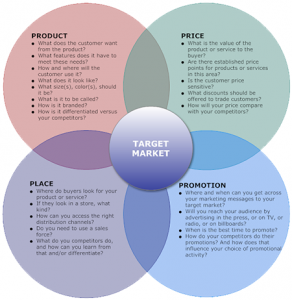Selling online, be it a service or a physical product, is more difficult than ever due to competition. Apart from the fact that most profitable niches are already saturated, looking for potent sub-niches may take forever.
To stay in the game, you’ll need to look for other accessible, yet effective tools that can improve conversions. Below are five great tools you can use to sell more online:
1. Kajabi
From email marketing platforms to landing page builders, online stores often rely on several tools to be profitable. However, investing in different products not only increases your overhead, but it may also overcomplicate the marketing and sales process – bottlenecking your store’s profitability.
To save time and money, you can use an all-in-one platform like Kajabi. This works by having everything you need to run an online store on a single website. It can help you create professional landing pages, craft emails that convert, track your analytics, and more.

Kajabi implements a clean user interface that makes it easy to find the tools you need. If you’re familiar with WordPress, then you should feel right at home with the intuitive dashboard. It also offers templates and themes you can combine to capture the experience that you envision for your customers. Of course, these themes are fully customizable so you can freely imprint your brand in each page.
2. GetResponse
If there’s a tool you can trust for automation, it’s GetResponse. As an email marketing and autoresponder platform, they understand the importance of efficiency for online businesses.
With GetResponse, you can create automated workflows that execute specific actions based on conditions and triggers. For example, you can create a “welcome email” that automatically sends whenever new users subscribe to your email list. You can also update their lead scores whenever they make a purchase, visit a URL, or abandon their shopping carts.

The workflow editor is fully interactive and quite straightforward. You can look for specific elements on the main toolbar and simply drag them into the workflow. From there, you can simply connect the pieces together to form a single process.
3. Crazy Egg
If you want to increase conversions, it’s important to know how your audience interacts with your website’s layout. Sure, not everyone does the same thing on your site. But once enough data is gathered, a pattern should emerge – highlighting the strong and weak points of your website’s layout.
With a heat map tool like Crazy Egg, you can skip the number crunching and visually observe where your audience goes. The “hot” zones are where most users tend to gravitate to. On the other hand, “cold” areas get the least attention and shouldn’t be used for key elements such as CTAs, product catalogs, and special offers.

Crazy Egg also includes additional features such as scroll maps, confetti, and overlay reports to identify what works in your design. As a rule of thumb, you should place key elements in hot zones for maximum exposure. You should also consider a site redesign and conduct A/B tests.
4. SEMrush
SEMrush is a competitor analysis tool that allows you to obtain data-rich insights for SEO and advertising. It works using a comprehensive dashboard that can help you navigate to different areas of analysis – from display advertising to keyword analytics.
Fortunately, you don’t have to be a data scientist to understand the information presented by SEMrush. Important data are visually represented using charts, graphs, and detailed lists. You can also aggregate all information in a single PDF report.

To help you move forward, SEMrush also offers tools that can help you turn analytics into actionable plans. For example, running an SEO audit on your site will provide you with data-driven recommendations. There are also other tools that can help you launch and track projects for your SEO and social media campaigns.
5. BuzzSumo
Regardless if you’re a blogger or an online storekeeper, content will be the bread and butter for your marketing. However, coming up with interesting content ideas can be very time-consuming and overall inefficient.
To quickly find content ideas that will generate engagement, you can use a content research tool like BuzzSumo. All you need to do is type in keywords or the domain name of your top competitor. Once the results are in, you are presented with a long list of popular content you can use for inspiration.

Aside from content research, you can also use BuzzSumo to look for influencers. These are bloggers and site owners whom you can work with to promote your brand. Influencers are also valuable assets for link-building, which is crucial for SEO.
Conclusion
In the online marketplace, it’s about who has the biggest guns. With the tools listed above, you should be equipped to compete for years to come. Test these tools yourself and plan on how you can integrate them into your game plan.
Digital & Social Articles on Business 2 Community(105)










